Review for Harry Potter: The Complete 8-Film Collection
Introduction
I was into Harry Potter mania when the first film came out, prompted to go back and pick up the books that all the cool business-folk on the daily commute were reading, and then being there front and centre for when the final three books were released. I loved the way the books were written, growing up with their target audiences; fantastic, colourful children’s stories for The Philosopher’s Stone, and full on angsty teen fiction by the time Deathly Hallows came around. I went to the cinema for the first three films, and eagerly pounced on the DVDs, and that’s when the experience went sour. The first two movies came out in collectable digipack form, but then Warner Brothers went and released Prisoner of Azkaban in a standard Amaray, and suddenly the symmetry of my shelving was thwarted. Oh well, I thought, I’d watch the rest of the films in cinema, and buy them all as a boxset when it was done and dusted, all around the same time I fell out of love with the cinema experience, the small screens, the idiotic prices, the other people...
I’d pretty much lost the thread on Harry Potter, hadn’t even watched the latter films when they premiered on broadcast television, when about a year ago, the Blu-ray boxset popped up for sale for under £20. Well, you can’t say no to that, all eight movies (eight movies?) for under £3 each in high definition. I’ve finally reached the set on my to-watch pile, and while I have latterly watched Goblet of Fire, Order of the Phoenix, and most of Half Blood Prince on television broadcast, I’ll finally get to see the Deathly Hallows. Of course I’ll begin by re-evaluating The Philosopher’s Stone, thirteen years after I first reviewed the DVD for this site. As Ron would say... Bloody Hell!
Presentation
You get four Blu-ray Amaray cases in a thin-card slipcover artbox. The first two films get a regular Amaray to themselves, as do the second two films, one disc on either face of their respective cases. The third regular case has a central hinged panel, and you get Order of the Phoenix on one face, and Half Blood Prince feature disc, and its bonus extras disc on the other face and the hinged panel. Both the Deathly Hallows films are two disc releases, and are presented in an Amaray fatpack, with discs on either inner face, and two discs either side of a central hinged panel.
The Philosopher’s Stone, Chamber of Secrets, The Prisoner of Azkaban, The Goblet of Fire and Order of the Phoenix autoplay the film on disc insertion, and you can navigate and change audio options from a pop-up menu. There are no main menu screens, but Top Menu does take you out of the movies and presents the extras in separate menus. The final three films on the other hand boot to a main menu screen, and let you set-up the disc before watching the films.
I’ve listed the extras to the films separately, and you can read more about them by clicking this link.
Introduction: Harry Potter and the Philosopher’s Stone
It’s the traditional orphan existence, living in a family lacking in love, but with no end of petty abuse and indignity. But Harry Potter’s upbringing from Uncle and Aunt Dursley along with cousin Dudley was by design, not through simple chance. Who knows what would have happened if Harry has known that he was the ‘Boy That Lived’ all along. As it is, he starts to learn the truth of his past when the towering Hagrid enters his life and tells him simply that he’s a wizard, and that he has a place waiting for him at Hogwarts School of Witchcraft and Wizardry, and he’s famous in the Wizarding world.
From miserable orphan under the stairs to ‘someone special’ is a welcome change, but the truth about his parents is less so. They weren’t killed in a car crash, they fell afoul of a dark wizard, Voldemort, a wizard whose power waned and vanished when he tried and failed to kill Harry, leaving him with a lightning shaped scar on his forehead. At Hogwarts, Harry learns that there are still good wizards in the world, like his new friends Hermione Granger and Ron Weasley and the rest of the students of house Gryffindor, and there are some not so good, such as his soon to be rival Draco Malfoy of house Slytherin. But more than that, there’s a mysterious plot afoot at Hogwarts, and that while Voldemort’s power might have waned, it hasn’t vanished just yet.
Picture: Harry Potter and the Philosopher’s Stone
Harry Potter gets a 2.35:1 widescreen transfer using the VC-1 codec. I was expecting to be hit with the usual instant Blu-ray upgrade sense of wonder as I usually get with Blu-rays, before starting to pick nits, but not this time, as the foggy start to The Philosopher’s Stone became indicative of one of the transfer’s weaknesses, and it wasn’t until daylight at the Dursleys that I saw the detail, colour definition, and pop that I was expecting. Generally The Philosopher’s Stone gets a decent transfer, with adequate detail levels, wonderfully rich colours, particularly in the magic world, and the organic feel of film, natural grain and even the rare fleck of dirt on the print. But there is that foggy start, and indeed other such scenes in the film where the environments are dusty or smoky, the detail levels drop, and the image suddenly feels flat in comparison to the rest of the film. It also seems as if there’s been some contrast boosting applied, with whites appearing blown in some scenes, blue skies seen on the DVD are white on the Blu-ray, and dark detail levels vary from the excellent to the non-existent. There are some crushed wizards cloaks in this film. It also becomes apparent that nothing dates as quickly as CGI. Yeesh!
Sound: Harry Potter and the Philosopher’s Stone
The disc autoplays with the Dolby TrueHD 5.1 Surround English option. Normally that would be a good thing, but you also have the option of uncompressed PCM 5.1 Surround English encoded at 4.6Mbps, which in this case is the preferable option. There’s little to fault here, with clear and audible dialogue, vivid and effective action sequences making excellent use of the surround soundstage (the letters flying around the Dursleys on Sunday are an impressive sound), and John Williams providing a memorable and appropriate score for the first film that will grow and be built upon in the subsequent films. There’s also a DD 2.0 English Audio Descriptive track, and the choice of English and English HOH subtitles.
Conclusion: Harry Potter and the Philosopher’s Stone
The shine has definitely gone off the first film for me, although much of that has to do with my own mania for the franchise waning. But Harry Potter and the Philosopher’s Stone just isn’t that good a movie. I suspect that it was never meant to be, it was instead supposed to grab the fans of the books at the age when what they wanted to see was the book faithfully recreated on screen. Making a successful movie from a literary source actually involves a whole lot of adaptation, distillation, and indeed ruthless culling. Such movies need to find one or maybe two or three ongoing plot lines and develop them through the script so that you get a narrative flow through the film. It should feel like a single cohesive piece.
That didn’t happen with The Philosopher’s Stone, as it plays out just like the book, albeit with a few bits left out for time. It’s fragmentary, with very much a chaptered feel, and with not everything essential to the plot. But what it does do is that it introduces the characters, and it sets up the world, it comfortably eases in the fans of the book, with an experience that is familiar and relatable, and you have to remember that those fans would have been mostly aged between 8-13 at the time, where such radical diversions as directorial style, editorial wizardry, and character discovery would have been distractions, not something to be appreciated. The Philosopher’s Stone is a workmanlike movie that does what it sets out to and nothing more.
6/10
Introduction: Harry Potter and the Chamber of Secrets
Harry Potter is looking forward to another eventful year at Hogwarts school of Witchcraft and Wizardry, especially as it means getting away from the horrendous Dursleys, but this year it looks as if he won`t even get that far, as Dobby the house-elf appears in his bedroom with a warning of dire consequences should he set foot in Hogwarts one again. It looks as if getting to Hogwarts will be impossible when Ron and Harry find that the magical gateway to Platform 9¾ is sealed against them, but a little ingenuity and the theft of Mr Weasley`s flying Ford Anglia insures that they make it to school in time for the beginning of term. But Dobby`s warning is portentous, as the heir of Slytherin has opened the Chamber of Secrets at Hogwarts, and death roams the corridors once more. If Harry, Hermione and Ron can’t get to the bottom of the mystery, then Hogwarts may be closed permanently.
Picture: Harry Potter and the Chamber of Secrets
There’s a significant improvement in the transfer of the second film to Blu-ray. The 2.40:1 widescreen 1080p image still uses the VC-1 codec, but I certainly didn’t feel that the contrast was overly tweaked this time. Black detail was always apparent, which in a movie with such a darker palette compared to the first was very welcome. The image wasn’t all that degraded when it came to smoky or misty scenes, usually retaining depth and clarity throughout, with the one exception of the rock fall just prior to the film’s conclusion when Harry, Ron and Lockhart first discover the location of the titular chamber. The second film also offers significant improvement in the area of CGI, and Dobby is a much more realistic and believable character than the troll of the first film, or indeed most of the Quidditch pilots. This is very much a step in the right direction, if not quite offering all that Blu-ray is capable of.
Sound: Harry Potter and the Chamber of Secrets
The disc autoplays the movie, defaulting to a 640kbps DD 5.1 English track. You’ll have to use the pop-up menu to change to the preferable PCM 5.1 Surround English audio track at 4.6Mbps. And once again, it’s a very enjoyable surround experience, rich and lively for the action sequences, making the most of the film’s music and keeping that all important dialogue clear and audible throughout. The Quidditch match in this movie trumps the first for audio versatility, while the film’s climax certainly has speakers working overtime. You also have the option of a DD 2.0 Audio Descriptive English track, while the only subtitles are English and English HOH again.
Conclusion: Harry Potter and the Chamber of Secrets
The biggest problem with the Harry Potter movies is time. The books tell a year worth of story in each one, while a movie has just two hours or so. When you have to remain as faithful as possible to the source material, it makes it difficult to make a film interesting and hold the attention. That’s why the usual novel adapted to a movie has drastic changes to it, whole characters and plotlines dropped, time condensed, even key moments changed. You can’t do that with Harry Potter, and the concern is that you wind up with a film like The Philosopher’s Stone, which lack a narrative arc, and instead feel like a series of loosely connected vignettes, a sketch show made into a movie.
Thankfully Chamber of Secrets avoids that, although you cannot get away from the patchwork feel of the narrative, the feeling that each scene is a week or two apart. What has been done that makes it work, is that each moment in the film, every scene has a plot point that is essential to the movie. A does lead to B and C and so on, and the mystery of the Chamber of Secrets is always at the heart of the narrative. Also the film has a distinctive tone to it, a sense of ominous foreboding and suspense that permeates the story, and the darker look of the film.
That said, the structure of the novel still hampers the movie, and having watched the film for the fourth or fifth time now, I really do wish that they could get to the dramatic intent of the story a little quicker. It does feel overlong now, and I tend to find myself nodding off by the time they do actually discover the Chamber of Secrets. Better than the first film, but still feels more like a novel than a movie...
7/10
Introduction: Harry Potter and the Prisoner of Azkaban
Harry Potter`s third year at Hogwarts School of Witchcraft and Wizardry gets off to an inauspicious start before he even gets to school, when in a fit of rage, he inflates his obnoxious Aunt Marge. He expects to be censured for breaking the law against underage wizardry, but is surprised to find that the Minister of Magic is inclined to be lenient. All becomes clear when he learns of the escape of Sirius Black from Azkaban prison. Black was a fervent supporter of Voldemort in the dark days, and Harry learns that Sirius holds him responsible for the dark lord`s demise. Now that he has escaped, Harry is the target for his wrath. What`s worse is that the Dementors of Azkaban have been unleashed to affect his recapture, and have taken up residence around Hogwarts, but also seem to take an uncommon and debilitating interest in Harry. Fortunately there is a new Defence Against The Dark Arts teacher at Hogwarts and Professor Lupin is concerned for Harry`s welfare. Harry keeps attracting trouble though, and in between fending off his nemesis Malfoy and learning to fly a Hippogriff, he learns an uncomfortable truth about Sirius Black.
Picture: Harry Potter and the Prisoner of Azkaban
The Prisoner of Azkaban gets a 2.40:1 widescreen transfer at 1080p, once again using the VC-1 codec, and once again it’s a very nice transfer, clear and sharp throughout, with rich colours, fine detail, great contrast, and the requisite layer of film grain that remind you that films were once made using actual film, and not just on hard drives. There’s a nice level of depth to the image, even in the darker and mistier scenes, while during the more frenetic of action sequences, I didn’t notice any compression or artefacts. There might have been a smidge of digital banding around an illuminated wand at one point, but that might have been my imagination. It’s all to the good, as The Prisoner of Azkaban is the most visual of films to this point, with great composition, effects and direction, with a far more organic and realistic feel to its magical world. I didn’t notice the 302 error this time.
Sound: Harry Potter and the Prisoner of Azkaban
The disc defaults to DD 5.1 English at 640kbps, and you’ll have to manually select the preferable 4.6Mbps PCM 5.1 audio track. There’s also a DD 2.0 Audio Descriptive English track for visually impaired viewers, and optional English subtitles plus English HOH subtitles too. The surround track is really quite good, effective, vibrant, but naturalistic as well, never overemphasising the effects, or indulging the LFE just because it can. The action sequences are emphatic and well defined, while the music score continues to grow and evolve as the series progresses. The dialogue is clear throughout, apart from a couple of Sirius Black’s more heated ravings...
Conclusion: Harry Potter and the Prisoner of Azkaban
Of all the Harry Potter adaptations that I have seen so far, or at least watched with my full attention on the screen, not distracted by pesky adverts, The Prisoner of Azkaban feels the most like a genuine feature film. Although that might be because of the novel, it lends itself most readily to a film adaptation. After all, there’s really just the one major plot in the film, that of the escape of Sirius Black, the targeting of Harry Potter, and the revelations of how Sirius Black was involved in Harry’s past. It’s a story that lends itself to a simple narrative, and functionally, it doesn’t really matter that the film takes place over a whole school year, or in the space of days. The flow of the story is natural, well paced, and feels concise, not at all piecemeal or bitty as in the first two films. It also means that you can devote nearly an hour to the film’s conclusion, and it doesn’t feel imbalanced.
In the hands of director Alfonso Cuaron, you also get a film which rightly incorporates magic as a fundamental, and background element of its world, not the moments of wonderment and fascination that it was in the first two films. He makes this a character focused movie, it’s about the three young leads, and it’s about Sirius Black and Remus Lupin, it’s about understanding who these characters are and how they fit into the story. As such, in such a fantastical and imaginative universe, it’s emotionally a very realistic story, and one that is very easy to engage with as a viewer. Of the first three films, it’s easily the best, and given how the subsequent novels become ever more convoluted and plot driven, I wouldn’t be surprised if I found The Prisoner of Azkaban to be the best of all eight Harry Potter films.
8/10
Introduction: Harry Potter and the Goblet of Fire
Like most everyone else, Harry Potter doesn’t let a nightmare get in the way of a good time. Even if the nightmare was of the ominous figure of He Who Must Not Be Named committing murder, that’s no reason not to enjoy the Quidditch World Cup. He really should have paid attention to the ill omen though, as it isn’t long before the World Cup is marred by worrisome unrest from a menace thought long forgotten, and it soon becomes apparent that Harry Potter’s fourth year at Hogwarts is only going to get worse. The Triwizard Tournament is taking place this year, and Hogwarts is competing against Durmstrang and Beauxbatons schools. It’s a series of tests so dangerous that only 17-year old students are allowed to enter, and only one champion from each school will be chosen. Yet when the names are pulled from the Goblet of Fire, against all the rules a fourth champion is revealed, Harry Potter. It’s all part of a sinister plan to engineer the return of the scourge of the wizarding world, and stronger than ever before.
Picture: Harry Potter and the Goblet of Fire
This is the year of long hair. Many of the male characters this year sport flowing locks that shimmer like a Timotei commercial. I’d be lying if I said it wasn’t a trivial distraction. The Goblet of Fire too gets a 2.40:1 widescreen presentation at 1080p resolution, encoded once more with the VC-1codec. It’s a transfer on a par with the previous two films, although Goblet of Fire is a visually darker and more muted affair. The CG effects are quite good, although the underwater sequences are stricken more than you might expect with uncanny valley syndrome. The tone of the film certainly suits the story well, as things become more ominous and worrying in the world of Harry Potter. There’s a lot less in the way of colour, although scenes like the World Cup and the Yule Ball do impress. The image is clear throughout, with impressive, vibrant, and detailed HD presentation for the most part, although like the previous films, depth and clarity do begin to suffer when dark and misty scenes prevail. I did feel the transfer could have been stronger during the final test in the maze.
Sound: Harry Potter and the Goblet of Fire
Ditto? The film autoplays with a DD 5.1 English track, this time encoded at 448kbps, and you’ll have to use your remote to change to the preferable PCM 5.1 audio at 4.6Mbps. There’s also a DD 2.0 Audio Descriptive track if you need it, while optional English subtitles are available, as well as HOH English subtitles. It’s a nice surround track, which conveys the action well, without burying the dialogue. Of the films so far, there’s the least of John Williams score surviving here, although the film’s music still manages to find the right language for the world. That’s except for the Pulp concert halfway through.
Conclusion: Harry Potter and the Goblet of Fire
When I first read The Goblet of Fire, I was fully convinced that there was no way that this story could be told in less than two movies. That would come later in the run, but The Goblet of Fire does manage to tell its story in the space of 2½ hours, although it has to be ruthless with what it cuts out. There’s no room for playful diversion here, and little room for character development and execution. It’s all about the Triwizard Tournament leading to the momentous climax of the film, and any scene not at first appearing to be associated with that, winds up adding to that plot anyway. As I opined about Prisoner of Azkaban, here the films really do become plot driven, and there’s no room for anything extraneous.
The Goblet of Fire is entertaining, and certainly exciting. It has a good pace to it, and enthusiastic performances from its main cast, who are really getting the hang of this acting thing by now. This fourth year of the Harry Potter cycle is when teenagers start being obnoxious to each other, on top of becoming painfully thin-skinned, and that is reflected in where the characters are. But despite all of the action, the pace, the better than ever special effects, there’s something pedestrian about Goblet of Fire. It may be a speed-walking pedestrian, but it’s still a matter of getting from A to B, hitting all the right points in between, and there’s very little room for cinematic flourish, very little that distinguishes the Goblet of Fire from a straight up adaptation, and it doesn’t feel like a movie in the way that Prisoner of Azkaban did.
7/10
Introduction: Harry Potter and the Order of the Phoenix
When Dementors attack Harry and his cousin Dudley in Little Whinging, magic is the only way to save them both, but the Ministry of Magic aren’t as forgiving of Harry’s underage use of magic as they were when he inflated his aunt two years previously. Indeed it looks as if they are hell-bent on persecuting him to the full extent of whatever law minister Cornelius Fudge can devise. It takes the timely intervention of Dumbledore to offer Harry a reprieve, but it becomes clear that all isn’t well in the world of magic, with few willing to accept Harry’s account of the return of Voldemort, and both he and Dumbledore being labelled as cranks, fantasists and liars in the press. Harry finds himself ostracised at school as a result; even Dumbledore’s avoiding him, while the few believers, the adults who have restarted the Order of the Phoenix, including his godfather Sirius, keep him out of the plans they are formulating against Voldemort and his gathering Death Eaters.
It’s the worst time for Harry to be on the outside, as his dreams have been getting worse, almost as if he’s sharing Voldemort’s vision, and it becomes clear that Voldemort is after a new weapon. If that isn’t enough, the Ministry have appointed Dolores Umbridge as the new Defence Against the Dark Arts Teacher, not to teach, but to clamp down on loose talk. But Ron and Hermione convince Harry that they need to prepare to fight back, to at least be ready for the oncoming darkness, and Harry creates an ‘army’ of his own.
Picture: Harry Potter and the Order of the Phoenix
The Harry Potter stories continue to get darker in tone, and that’s reflected in the look of each subsequent film. It’s another 2.40:1 widescreen 1080p VC-1 transfer, which looks pretty stunning for the most part, clear and sharp, good contrast and rich with detail. The Ministry of Magic certainly wows as a visual edifice, and it’s noticeable that they use a different, simpler effect for Sirius in the fireplace. It seems that each film has one obviously dodgy bit of CGI, and the cartoon moment in Order of the Phoenix is Grawp, the Centaurs, and Umbridge.
Sound: Harry Potter and the Order of the Phoenix
The disc autoplays with the DD 5.1 English track, back up to 640kbps, but the audio track of choice is once again the PCM 5.1 Surround English audio, resounding, and enveloping, although this time there are a couple of moments where dialogue can be lost beneath aggressive action sequences. The music once again builds on the initial world of John Williams, but there are moments here that stand out, most particularly the Weasley twins’ departure from Hogwarts. You also get a DD 2.0 AD English track, as well as English subtitles, normal and HOH.
Conclusion: Harry Potter and the Order of the Phoenix
Harry Potter and the Order of the Phoenix is my least favourite of the books. It’s the one where J.K. Rowling most needed an editor that could say no. It’s overlong, convoluted, padded with irrelevancies; a book that is almost as thick as it is wide. As such I had high hopes of what a film adaptation could do for the story, to make it manageable and more coherent, to do for Order of the Phoenix what Peter Jackson did for The Lord of the Rings. It turns out that the filmmakers have been more ruthless with this film than any of the others, turning the longest of the books into one of the shorter films at just 2 hours and 20 minutes. I can’t believe that I’m actually saying this, but they’ve been a little too handy with the scissors, and what remains isn’t all that satisfying as a story. They’ve cut too much out.
Like all of the books adapted to film to this point, year-long stories told in a space of two hours, the narrative is always going to be piecemeal, the passage of time variable, but the other films to this point managed to find what was essential in the story and craft a film around that. Despite the padding of the Order of the Phoenix book, it turns out that there was a whole lot of narrative in the book that needs to be told, and there just isn’t enough time in the film to do so. So we get the cinema shortcut of newspaper headlines spelling out significant plot developments and as a shorthand for the clock turning. The actual narrative that we do see on screen is held together by this movie trickery, but it still feels like a Cliff Notes version of the story.
Characters are introduced like Tonks and Luna Lovegood, that just don’t get the suitable development that they need, and neither do those that are revisited. It’s pared down to beyond the bare minimum to tell Harry’s story in this film, and the film really only works for those who have the knowledge of the book to help place the scenes in context. If you’ve read the book, and know the backgrounds to the characters, the reason why things happen in the story, then you’ll enjoy the film a lot more. But if this film is all that you know of The Order of the Phoenix, then it is perhaps the most disappointing of the films so far.
5/10
Introduction: Harry Potter and the Half-Blood Prince
Voldemort is back and wreaking havoc, not only on the Wizarding world, but the Muggle world as well, and it’s no wonder that the news headlines are as bleak as the weather. But unlike last year, this year Dumbledore has a plan to deal with Voldemort, and Harry’s right in the middle of it. It all boils down to one Professor Slughorn, newly returned to Hogwarts to resume his position as Potions Master. He was one of Voldemort’s teachers, back when he was Tom Riddle, and it transpires that he knows something about the Dark Lord which Dumbledore needs to know; only Slughorn is too tight-lipped.
But Slughorn has a habit of ‘collecting’ the scions of the powerful and famous, as well as promising students of the future, he’s a career networker, and he’d like to add Harry Potter to his shelf. And that is Dumbledore’s way in, using Harry to find out Slughorn’s secret. If only Harry had paid attention in Potions class. Fortunately, he manages to get hold of an old Potions textbook that has been liberally annotated by a previous student, the self-styled Half Blood Prince, and suddenly Harry’s at the top of the class. But he and Dumbledore aren’t the only ones making plans. This year, Draco Malfoy has a mission of his own, one that visibly takes its toll on Harry’s nemesis, and a mission that will change Hogwarts forever.
Picture: Harry Potter and the Half-Blood Prince
Once again we get a 2.40:1 widescreen transfer using the VC-1 codec, and once again I’m hard pressed to pick out any particular flaws with the image. It’s clear and sharp throughout, no visible signs of compression, digital banding or aliasing. It looks like a faithful representation of the original source. But the Harry Potter films continue to get darker and darker, not only in terms of the story, but in terms of the visuals as well. By this point, they’ve taken to desaturating the image of colour to add to the gloominess, and quite often a scene will fade to black in the background, really only highlighting the foreground elements. It’s moody, atmospheric, and stylish, but at times I did think it was overdone, distracting from the story.
Sound: Harry Potter and the Half-Blood Prince
Unlike the first five discs, this is really a disc for the world, offering the English audio in Dolby True-HD 5.1 Surround (no more PCM), and DD 2.0 audio descriptive, with other languages in Dolby Digital 5.1 Surround, French, German, Italian, Spanish, Dutch, Portuguese, Catalan and Flemish. There are plenty of subtitle tracks too. The surround is nice, resonant, and very effective during the action sequences, and in terms of establishing ambience, giving the film’s music space, but at this point the Harry Potter films start to ape the rest of their cinema peers, and start burying the dialogue beneath the action during the more strident moments, making the presence of subtitles more a necessity than a useful option.
Conclusion: Harry Potter and the Half-Blood Prince
The Half-Blood Prince is really good. Perhaps it helps that I only read the book once, and have long since forgotten what probably had to be cut out to get it into a manageable screenplay, but The Half-Blood Prince is the first Harry Potter adaptation since The Prisoner of Azkaban to really feel like a feature film that belongs on the screen, not on the page. That it’s very much a visual film, one that revels in its dark and moody atmosphere, one that really paints its story on screen is an obvious plus. It also helps that it very early on establishes its two main plot threads, Malfoy’s mission, and Harry trying to learn Slughorn’s secret, and it never really strays from these story arcs, never gets distracted.
The film also works tonally. We have this main, dark, storyline running through the film, an impending sense of suspense, of ominous foreboding growing through the film, but it’s leavened with some very effective humour, some delightful comic moments, that serve to light up the screen. Of course the big change here is the hormones. This is the point in the Harry Potter story that the characters start pairing off, start falling in love, and we get all the trials and tribulations of young love to provide the character drama and character growth that were really missing in the previous two films. It also helps substantially in that the cast have really matured by this point. They’re no longer child actors, but actors full stop, and deliver consistent, strong, and effective performances, really conveying the emotional content of a scene.
As part of a series, The Half-Blood Prince is the best of the Harry Potter movies I have seen to this point, but unlike The Prisoner of Azkaban, this one really works best for people who are watching the whole saga, whereas Prisoner of Azkaban stands alone a little better. It’s a small nit to pick. And in terms of the look of the film, I could actually see more of Prisoner of Azkaban. The Half-Blood Prince needed a few more Lumos spells from its cinematographer.
8/10
Introduction: Harry Potter and the Deathly Hallows, Part 1
It’s the start of the new school year, but Harry won’t be returning to Hogwarts. Not when Voldemort and his Death Eaters are gaining in power, sowing fear and panic through the wizarding world, and disrupting the Muggle world too. Top on their death list is Harry Potter, and the first thing that the Order of The Phoenix have to do is to collect him from Little Whinging and take him to safety. But there is no safety any more, even Bill Weasley and Fleur Delacour’s wedding is attacked, just because Harry is there. The time has come for Harry to complete Dumbledore’s mission, to find the Horcruxes that harbour the fragments of Voldemort’s soul and destroy them. He has Ron and Hermione’s help of course; it will be harder than anything they’ve had to do before, especially with the Death Eaters hunting them down.
But the Horcruxes may be the least of their problems. As they continue the search, they keep finding an arcane symbol, which they learn is a mark of the Deathly Hallows, elements from a wizarding children’s story. But it turns out that Voldemort is after the Deathly Hallows too.
Picture: Harry Potter and the Deathly Hallows, Part 1
This time the 2.40:1 widescreen transfer uses the AVC codec, although I’m hard-pressed to notice any difference between this and the previous film. The image offers the requisite HD clarity; detail levels are great, and contrast is excellent. The CG effects also blend in seamlessly, and Dobby and Kreacher in particular have never looked so tangible and part of the action. And just when I thought that the Harry Potter films couldn’t get any darker, they manage to find new shades of black, new degrees of de-saturation for the penultimate film.
Sound: Harry Potter and the Deathly Hallows, Part 1
We have changes for the audio as well, with the significant audio track on this disc a DTS-HD MA 5.1 Surround English track. I have to say that to my ears it actually sounds better than the Dolby TrueHD efforts that came previously, I was wholly impressed with the quality, clarity, and power of the surround audio, the niftiness of the sound design, the impact of the action sequences and the well-balanced audibility of the dialogue. The music for the film is supplied by Alexandre Desplat, but for the first time since The Chamber of Secrets it really felt cohesively like a John Williams score. You also get DD 2.0 Audio Descriptive English, DD 5.1 Catalan, Spanish and Czech, with subtitles in those languages, Arabic, Danish, Swedish, Norwegian, Finnish, Icelandic, and Slovenian.
Conclusion: Harry Potter and the Deathly Hallows, Part 1
It’s obvious that this is half a novel, but the question is, is it half a movie? It certainly feels that way. The way the film just stops mid flow, with a downer of an ending and with everything left up in the air feels anticlimactic and unsatisfying. It’s no Empire Strikes back in that regard. It really feels like the first half of a film, although having the full film in one go would have been a Lord of the Rings affair. Maybe cutting it in half this way was the sensible thing to do, given the length, complexity and density of plot of the final Harry Potter book. Giving it the Order of the Phoenix treatment would have left viewers feeling cheated.
As it is, it’s difficult for me to judge this film on its own, and I really have to watch the final instalment also to see how well The Deathly Hallows fares on its way to the screen. But one thing is clear about this film, it’s the first Harry Potter film that really looks at the central triumvirate of characters, as it is in essence, a road movie as Harry, Ron and Hermione go about their mission to find and destroy the Horcruxes, and latterly to learn more about the Deathly Hallows, Voldemort, and indeed Dumbledore. It’s three people facing adversity together, and the strains it puts on their otherwise previously solid friendship. It can be a bleak and cold character drama at times, but it still has its lighter moments, and charming interludes of comedy and brightness, although far fewer than before.
But it really is Harry, Ron and Hermione for much of the film with just the odd interlude to see what Voldemort is up to. As such, a lot of significant developments happen off screen, we only hear about Snape becoming headmaster of Hogwarts on a magical radio, we don’t even see the fall of the Ministry of Magic, and appearances from other regular characters are brief enough to be merely cameos. You might be left wondering at what else is happening in the world of Hogwarts as we stick with the road movie aspect for the duration. Still, it’s an interesting direction for the movie to take, and it remains entertaining enough, until the unsatisfying pause at the midpoint.
7/10
Introduction: Harry Potter and the Deathly Hallows, Part 2
The end is at hand. All that Harry, Ron, and Hermione need to do is to find the final few Horcruxes and destroy them, to render Voldemort vulnerable. The hard part is finding out what and where the Horcruxes are. And time is running out, as Voldemort seeks the Deathly Hallows, and he already has the Elder Wand. The endgame will be played out at the hiding place of the last Horcrux, Hogwarts School of Witchcraft and Wizardry, with Voldemort bringing his army of Death Eaters to bear. Harry will finally learn the truth about his tragic childhood, but the truth may come too late to save him.
Picture: Harry Potter and the Deathly Hallows, Part 2
You can rinse and repeat what I said about Part 1, a 2.40:1 widescreen 1080p AVC transfer, which is clear and sharp throughout. This is the darkest of the Harry Potter films, the battle of Hogwarts takes place at night for one thing, but black levels are consistently strong, and contrast and dark detail is never lacking.
Sound: Harry Potter and the Deathly Hallows, Part 2
The same is true for the audio, although the choices may be slightly different. This time you get DTS-HD MA 5.1 Surround English, DD 2.0 Audio Descriptive English, and Dolby Digital 5.1 Surround Spanish, Catalan, Czech, and Slovakian, with subtitles in those languages plus Arabic, Danish, Finnish, Icelandic, Norwegian, and Swedish, and it’s all good, the dialogue remaining clear throughout, with the music and the action represented well by the surround treatment.
Conclusion: Harry Potter and the Deathly Hallows, Part 2
Harry Potter and the Deathly Hallows, Part 2 isn’t a great movie. Part 1 would have been a good movie if it didn’t just stop halfway through. Put it all together, and you do have a good movie, with a beginning, middle and end, with Part 2 serving as the climax to Part 1’s build up. The best way to watch these films is to just find 5 hours in a day and watch them both in one go. The next best thing, as I know that time is often at a premium, is to watch them over successive nights. As the conclusion to the Harry Potter saga, a story that fans would have been eagerly anticipating for years, I can’t imagine how deflating the cinema experience must have been, watching the start of the movie in 2010, and then having to wait until 2011 for the end. In an ideal world, they would have just shot a four and half hour movie and released that, it has been done before, but the studio have to get their money’s worth.
My cynicism aside, Part 2 kicks off with just the barest lip-service to recapping the story, with a reminder that Voldemort has obtained the Elder Wand, before resuming the adventure, with our three heroes poised to locate the final Horcruxes, before heading back to Hogwarts for the ultimate confrontation with the epitome of evil. It allows for one final burst of energy, a bit of action and comedy as the trio raid Gringotts, before things get really dark and dramatic for the final battle, and leavening the action with a bit of levity, or some other character arc is no longer an option. For the conclusion of the film, we follow Harry’s arc all the way through, which is a great choice, as it hold the narrative and emotional focus of the film while all the action set pieces and destructive conflict happens around him. We may cut away briefly to see Hermione and Ron’s battle with Nagini, or Voldemort’s latest charge against the castle, but all these diversions always serve Harry’s story. Of course this does mean that some events in the story aren’t shown on film, certain emotive character deaths happen off screen, but this was the right choice to make. This is after all Harry’s story.
The Deathly Hallows, Part 2 doesn’t really put a foot wrong in my estimation as it barrels headlong towards its conclusion. That is until the film’s epilogue, the 19-years later vignette, effective in the book, but not so much on film, as the middle-age make-up on young actors doesn’t quite feel reel. The girls in particular still look like girls but with granny hairstyles.
If I were marking this as half a movie, it wouldn’t really impress, an epic conclusion without a beginning, but you really do have to take both films as one package, one big feature film called The Deathly Hallows, and as such it’s a solid piece of drama and entertainment, following three friends on a journey of discovery, both of self and the truth of their world, a journey which tests their beliefs and their commitment and their mutual friendship, a journey that tempers and hardens them for the inevitable conclusion. So, for four and a half hours of film it’s a solid...
8/10
In Summary
How lucky could filmmakers get! You have a predominantly child cast, who you follow over eight movies, seven years of school, ten years of real time filming, and they don’t go the expected route of the child star, initial fame followed by a public crash and burn, and to the lament of many a tabloid, they still haven’t. Incidentally, Boyhood might have picked up the Oscars, but Harry Potter did it first, and on a much larger scale. Even more importantly in terms of the film, they looked like film stars at age ten, and they still looked like film stars at age 20. They could so easily have gone the Jake Lloyd route, cute, photogenic, button nosed future Dark Lord of the Sith in 1999, who grew up to be a normal looking, everyday guy.
The Harry Potter films are apparently the most successful literary adaptation to film in history, but I have to say that it is mostly down to the sheer hysteria that surrounded J.K. Rowling’s Harry Potter books in the first place. I don’t see them as great cinema, They are fulfilling, decent adaptations of the books, which bring that magical world to life with visual flair certainly, but it was usually a case of distilling the books down to fit the screen, rather than finding what is most cinematic about the stories. The problem always was that the Harry Potter books always had such a density of plot, so many details to keep in mind, that it often felt as if half the important stuff was left off screen. It’s not just the cool bits that fans would complain about, wondering why there wasn’t more Firenze, or where all the Quidditch was, it was interesting background details of the characters, particularly Dumbledore’s past in the final film, that couldn’t make it on screen, for lack of time or pacing issues. But it’s stuff that goes into explaining character motivations, fleshing out the plot, and it’s why I feel that the Harry Potter films work best in conjunction with the books, not by themselves.
Of the films, the only one that really disappoints is The Order of the Phoenix, which loses too much of the unwieldy book to really satisfy. The rest of the films are just workmanlike affairs, entertaining, and fulfilling, always getting the story across but lacking cinematic flair. That’s with the exceptions of The Prisoner of Azkaban, and The Half Blood Prince, two films which make me forget their respective source materials, and which I can appreciate wholly as movies in their own right.
The Harry Potter movie collection is very affordable on Blu-ray, and it will provide entertainment for children of all ages, including us middle-aged children, and you might as well pick up a copy, rather than wait for a better transfer of The Philosopher’s Stone, the one film in the series that really needs one.
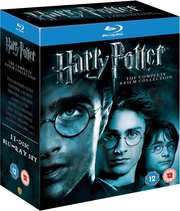












































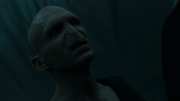
















































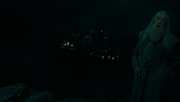


































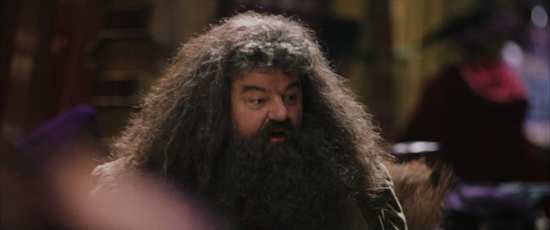
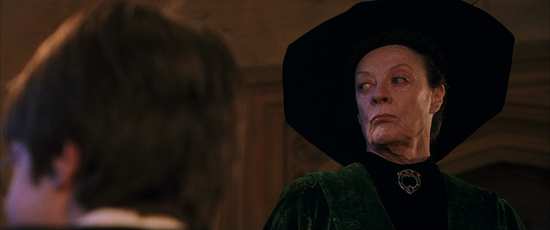

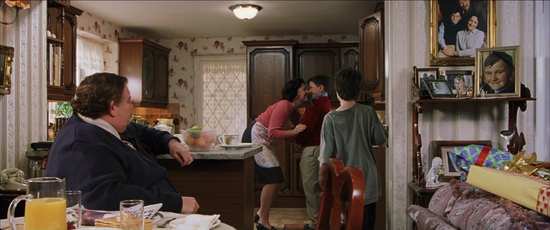

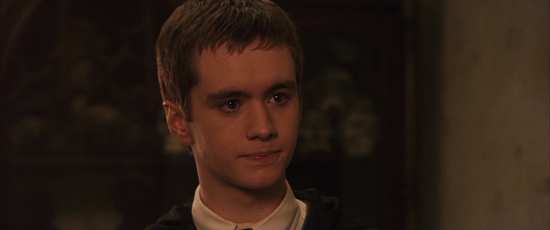

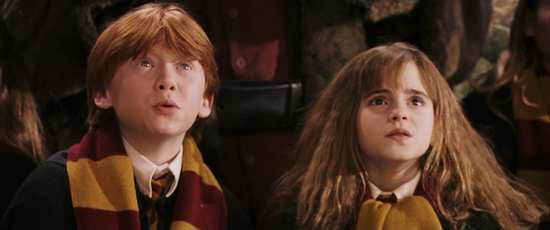
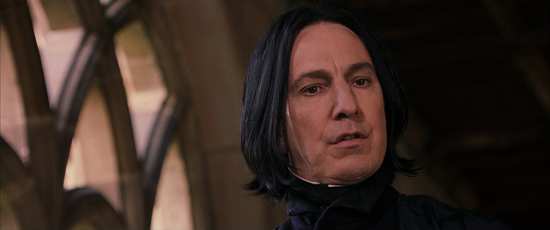
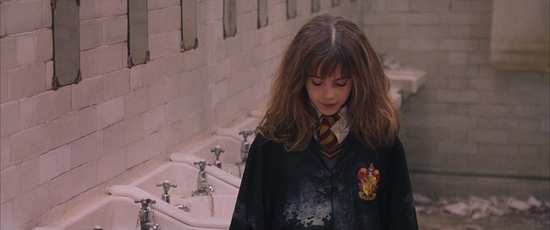
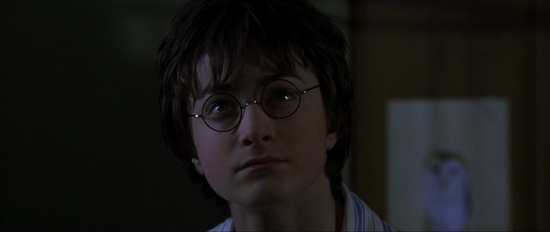
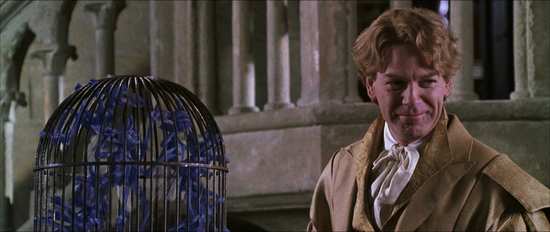
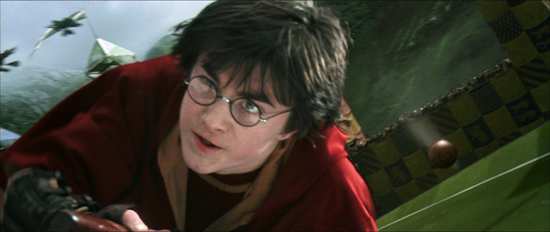
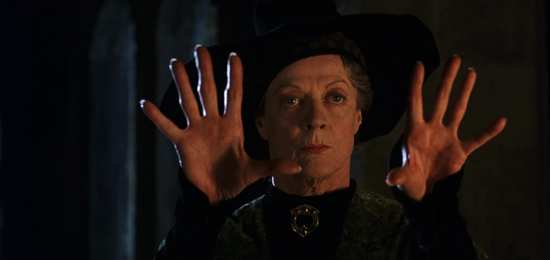
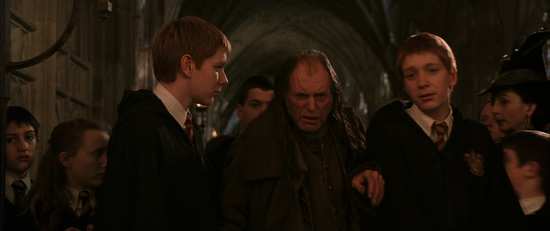
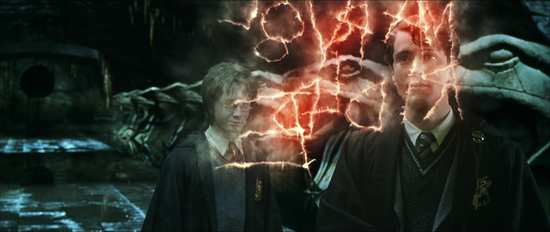
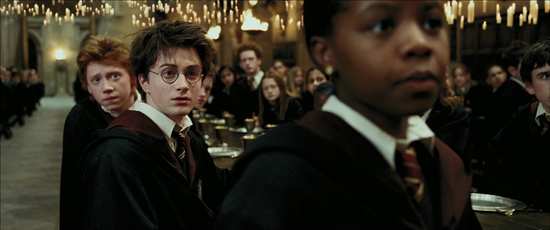
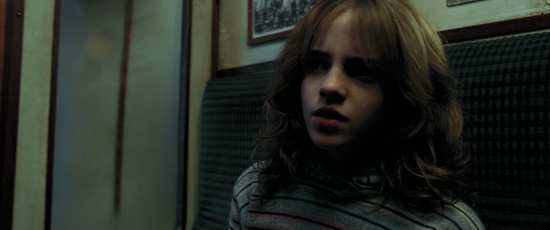
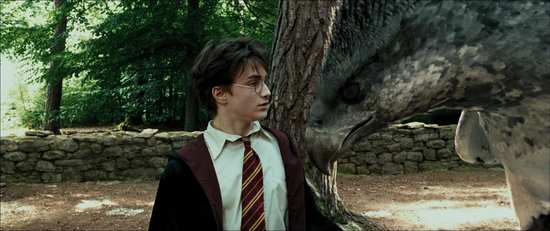
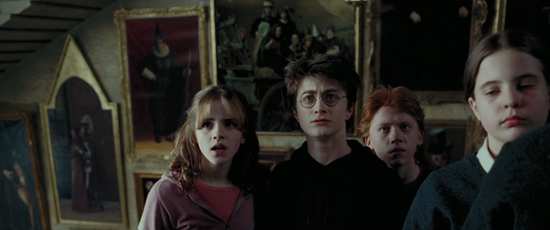
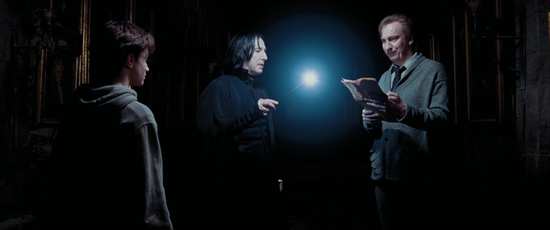
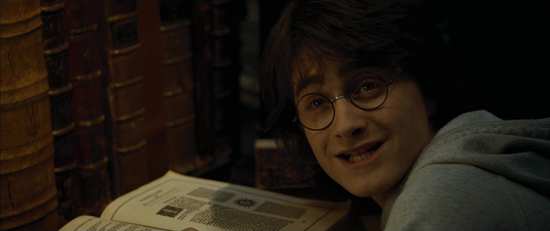
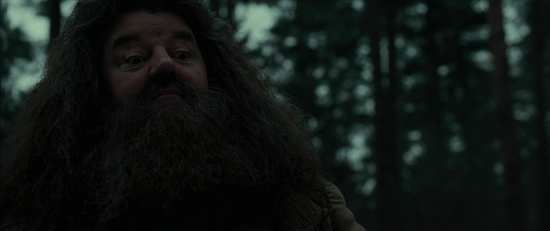
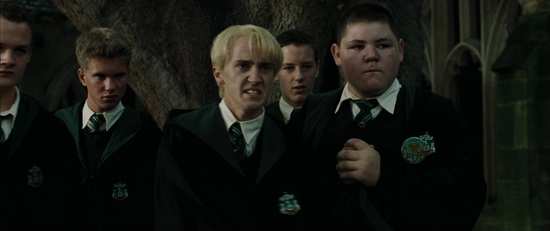
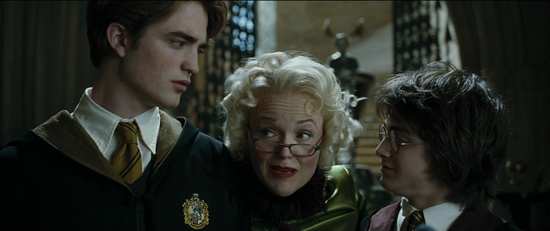

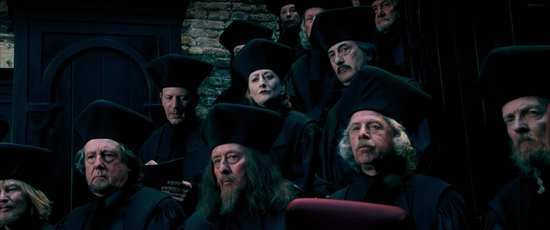
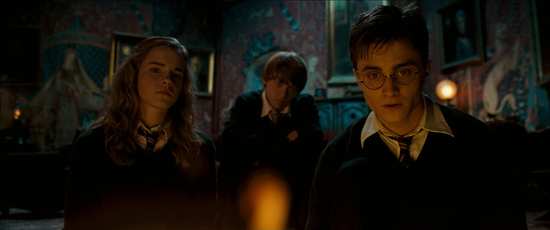
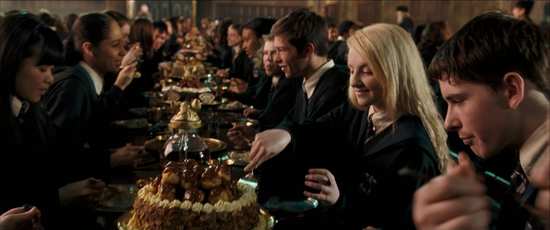
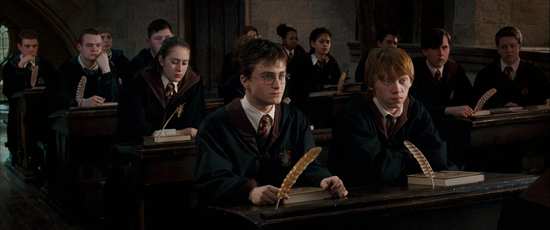
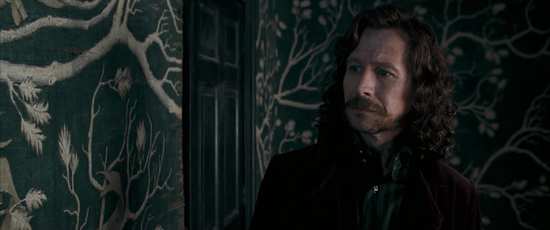
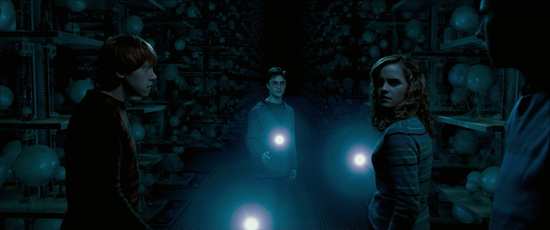
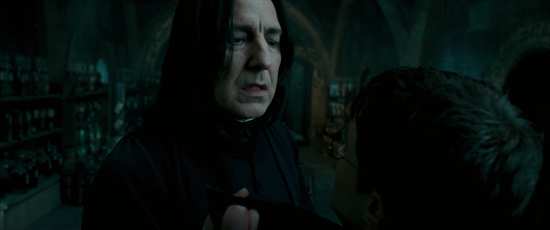
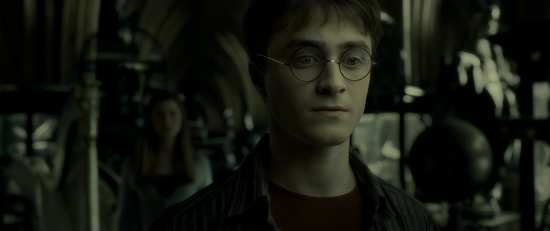
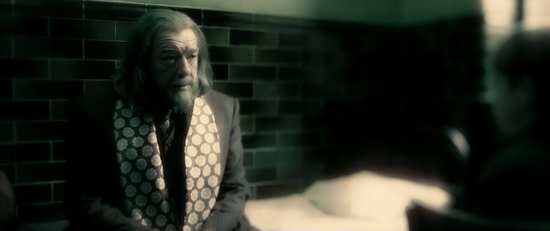
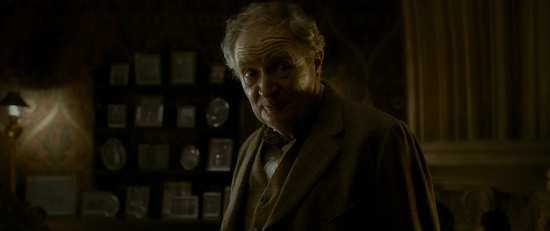
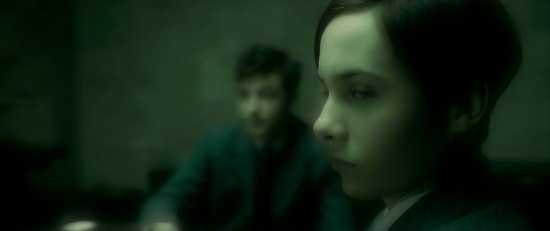
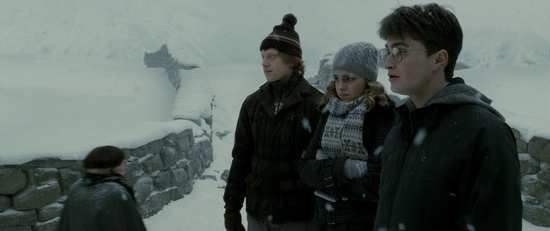
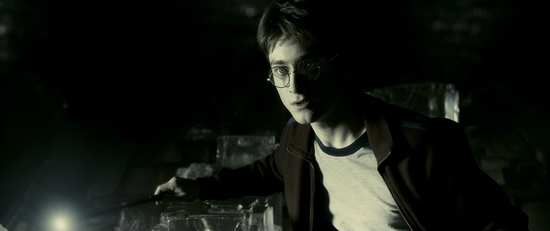
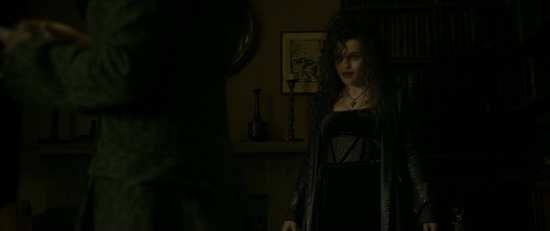

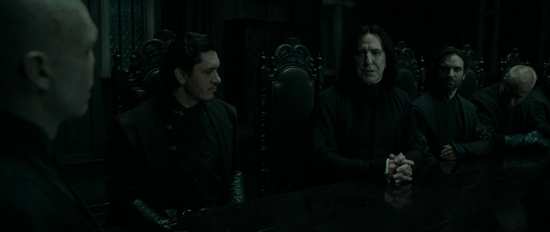
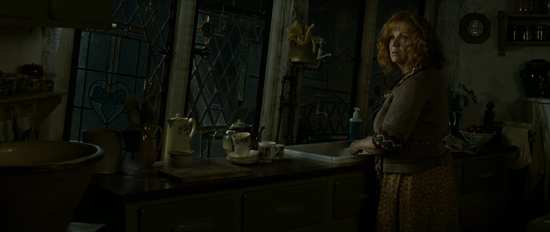
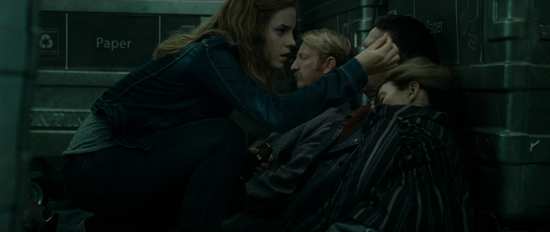
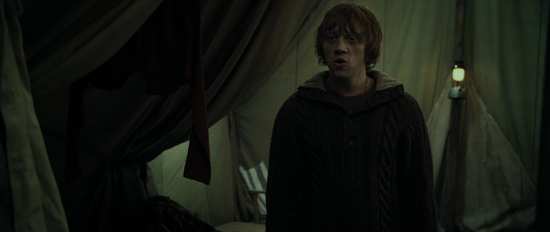
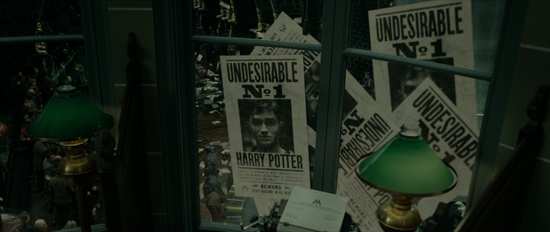
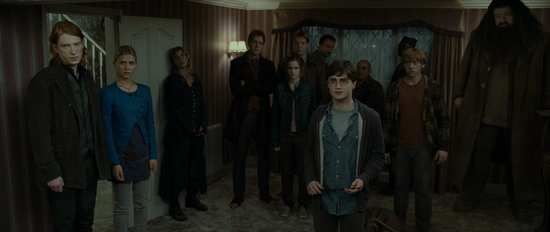

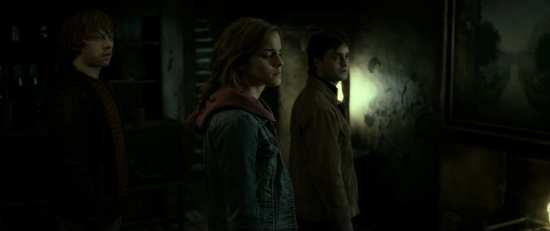
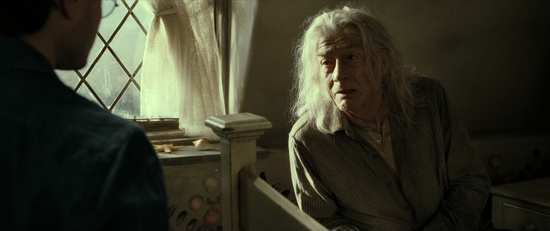
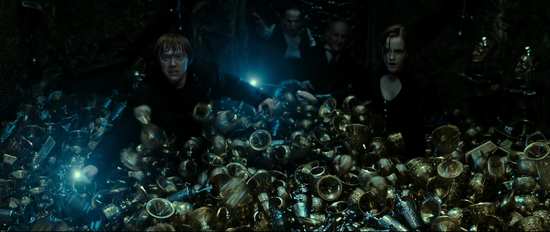

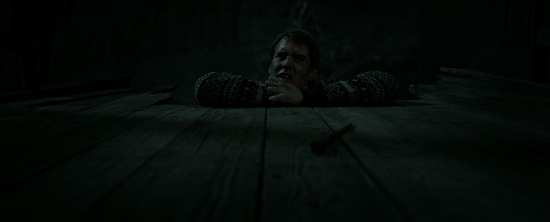
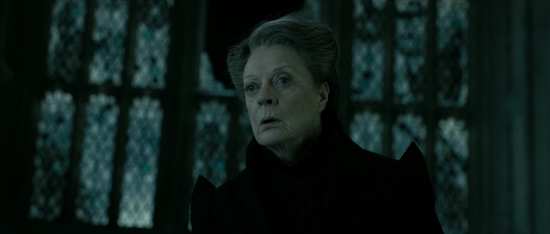
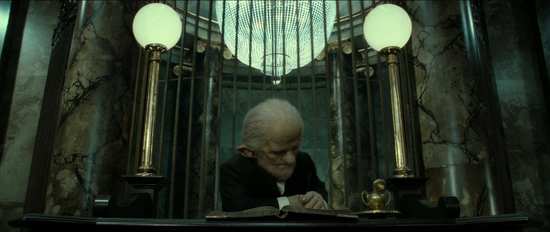
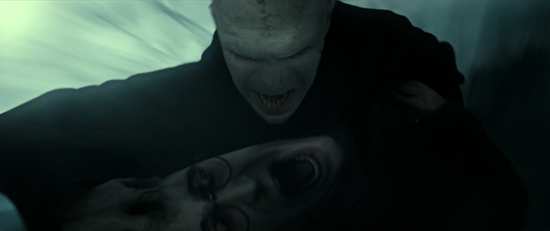
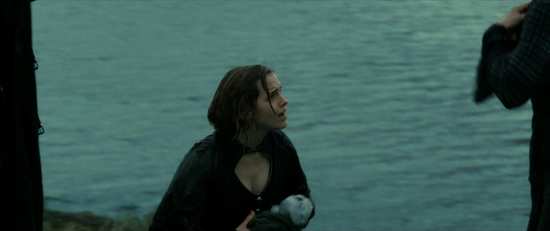
Your Opinions and Comments
Be the first to post a comment!